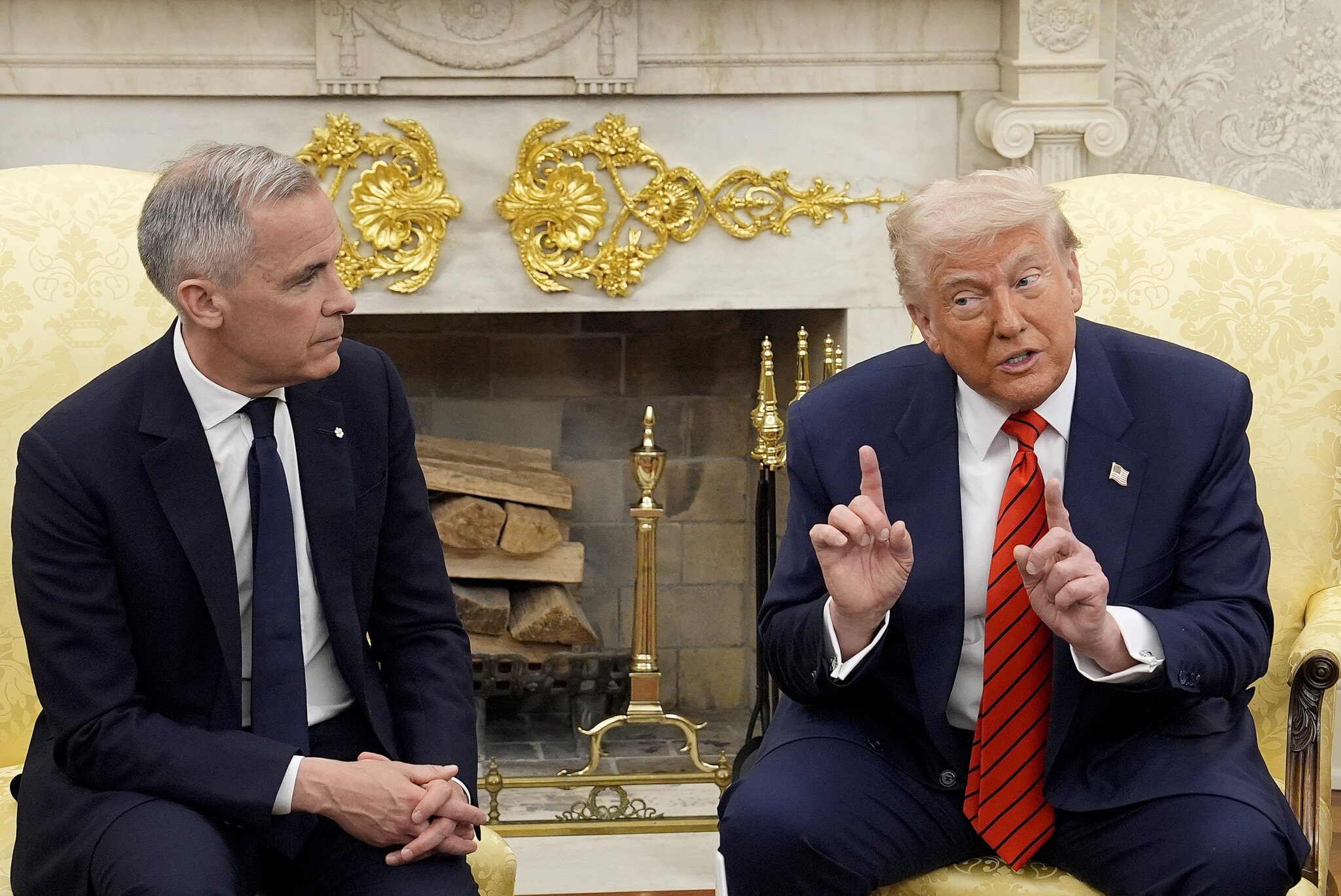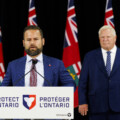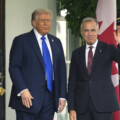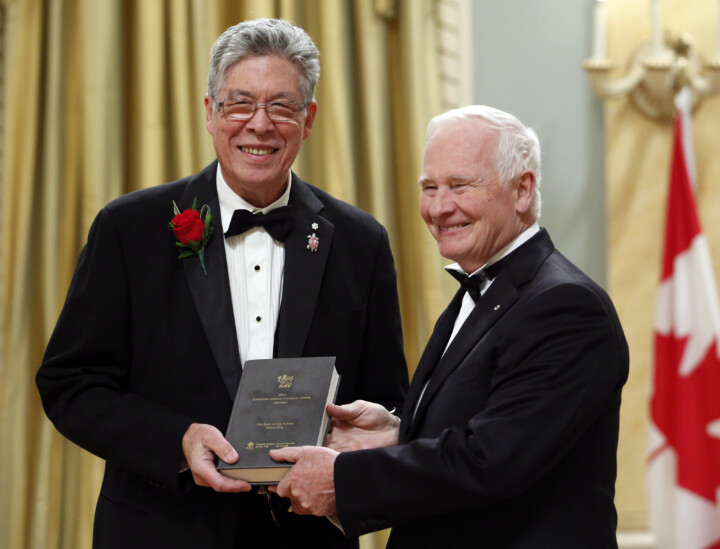Welcome to Need to Know, The Hub’s twice-weekly roundup of expert insights into the biggest economic stories, political news, and policy developments Hub readers need to be keeping their eyes on.
Donald Trump doubles up his aluminum and steel tariffs
By Joseph Steinberg, professor of economics at the University of Toronto and NBER research associate
President Trump’s global trade war faced major legal setbacks last week, but the light at the end of the tariff tunnel isn’t here just yet for Canada’s economy.
Last Wednesday, the U.S. Court of International Trade ruled that Trump’s worldwide “reciprocal” tariffs, as well as the tariffs he imposed on Canada, Mexico, and China in response to the so-called “fentanyl emergency,” are unconstitutional. This ruling has been stayed for now by higher courts pending appeals, but the Supreme Court will likely have the final say, and legal experts from across the political spectrum believe the Trump administration will ultimately lose.
This offers little solace for Canadian exporters, however. The fentanyl-emergency tariffs have been watered down with numerous exemptions, and tariffs on steel, aluminum, and autos were imposed using a different set of legal powers that these cases did not address. Angered by the legal setback, as well as questions from the media about his willingness to follow through on his trade-policy agenda, Trump announced last Friday that he would double the steel and aluminum tariffs, from 25 percent to 50 percent.
Thus, while the rest of the world may be breathing a sigh of relief, Canada finds itself once again sighing in frustration.
In the midst of all these developments, rumours abound that a trade deal between the president and Prime Minister Carney may be imminent. The president’s legal setbacks might reduce his negotiating leverage, but they might also spur him to drive a harder bargain. They might even scuttle the deal altogether. Reaching a deal ought to be the new prime minister’s biggest priority, though, so my fingers are crossed that he pulls it off.
Letting Conservative MPs speak their minds is a risk, but the party will be better for it
By Sean Speer, The Hub’s editor-at-large
With Parliament back in session, there are signs that the Conservative Party is loosening its grip on strict message discipline. What we may be seeing is the emergence of a post-election equilibrium—one in which the party, no longer on the cusp of government, is negotiating how to reconcile greater autonomy for members of parliament with a coherent governing vision.
Recent weeks have brought instances of Conservative MPs speaking to different audience and on different issues. Adam Chambers and Shuv Majumdar for instance have done major interviews with the CBC. Jamil Jivani has proposed that the government fully eliminate the Temporary Foreign Workers program. New Conservative MP David Bexte’s maiden speech nodded to greater immigration restrictionism. And Matt Strauss’s called COVID-era restriction a “form of communism.” These aren’t aberrations—they’re expressions of a party wrestling with its own breadth and diversity as well as a collective sense that MPs won’t accept the top-down discipline that marked the last parliament.
Some will see this as evidence of indiscipline or incoherence. But we should resist the reflex to equate unity with uniformity. In a pluralistic society, it’s natural—even desirable—for a big-tent party to contain divergent views. The alternative is a hollow, sanitized politics in which talking points replace ideas.
We can’t simultaneously call for more intellectual seriousness in our politics and then recoil when politicians offer competing visions or challenge orthodoxy. A more open and dynamic conservatism may occasionally produce controversy. It may even cause discomfort. But it’s far healthier—and ultimately more democratic—than the sterile politics of conformity.
The key is to harness this diversity into something constructive: a genuine debate about how to govern a modern, complex country. That’s the real test. And if the Conservatives can meet it, they’ll be stronger for it.
Lack of consequences normalizes violent antisemitism
Howard Fremeth, vice president of communications at the Centre for Israel and Jewish Affairs
I owe my life to a decision my late grandmother made to flee her family ahead of the advancing Nazi army. She survived. Her husband, parents, and brother did not.
Since the October 7th massacre, one small consolation has been knowing she passed away before witnessing the tidal wave of antisemitism crashing over us in her adopted home. But I wish I could ask her: How did you know it was no longer safe?
In Canada today, antisemitic violence is almost routine. A synagogue firebombed. A school shot at. Protesters chanting “Jews back to Europe”—the same place where my family was murdered. Canadians assaulted for simply attending Jewish events.
Much of it doesn’t even make the news anymore. This is not just because it happens a lot, which it does. It’s become normalized because there are few real consequences for the hatred, incitement, and violence.
What struck me most about the recent video of Barstool Sports founder Dave Portnoy in Toronto wasn’t the man yelling “F**k Jews.” It was the teens filming and laughing in the background—no one willing to call out the antisemite who went on with his day.
Yet that incident, as upsetting as it was, pales in comparison to the lack of consequences for more violent acts: minimal punishment and even charges dropped against some members of the “Indigo 11” who vandalized a Jewish-owned business; no charges at all against Charlotte Kates for praising Hamas and calling for more attacks against Jews like the one last month in Washington; and protesters dressed as terrorists, toy grenades in hand, allowed to intimidate families at Canada’s largest Jewish cultural event.
Our community is not safe. Meanwhile, the antisemites are emboldened. The only thing that will change this equation is for our leaders, at every level of government and society, to make it clear: violent actions have consequences.
‘Ottawa knows best’ nation-building
By Alex MacDonald, associate vice president at Counsel Public Affairs
The premiers of our provinces and territories enthusiastically emerged from their recent first ministers’ meeting in Saskatoon, which was heavily pre-positioned as focused on so-called “nation-building projects.” Numerous participants welcomed the fresh tone from the new prime minister.
However, tone and substance are two distinct things. Carney may use a different lexicon and employ a more congenial tone, but nothing transformational has occurred, yet.
The proposed approach for the federal government to fast-track nation-building projects demonstrates a continuity in governance style rather than a departure. Laurentian capitalism, the “Ottawa knows best” quasi-command style economy, is still very much alive and well.
By self-anointing themselves to solemnize a short list of projects that will build the nation, the Carney Liberals have chosen to explicitly sidestep the legislative and regulatory maze they created, rather than substantively reforming it to truly transform the economy. This is not dissimilar to how the Carney Liberals zeroed the consumer carbon tax, rather than legislatively eliminating it.

Premier of Saskatchewan Scott Moe, left too right, Prime Minister Mark Carney, Premier Doug Ford speak to media following the First Minister’s Meeting in Saskatoon, Sask., Monday, June 2, 2025. Liam Richards/The Canadian Press.
The tone is a positive change, but let’s not fool ourselves. Through regulation and legislation, the federal government still has its foot on the throat of our resource-producing economies.Bill C-69, the oil tanker moratorium, the emissions cap, the Clean Electricity Regulations, net-zero targets, an ever-increasing industrial carbon price, and methane regulations all remain unchanged. These punitive policies have created a regulatory pancaking that has stifled investment, growth, and weakened Canada’s competitiveness. To this regulatory maze can now be added the need to lobby for a place on the coveted short list of nation-building projects. If you want to get big things done, Ottawa is now unilaterally narrowing the gate to success.
While the Carney Liberals continually refrain that there are no private sector proponents for various aspirational projects, perhaps they should look inside themselves and realize that it is because they supplanted the traditional role of private sector proponents and eradicated investor confidence. This, in conjunction with their long professed climate zealotry, has created an artificially constrained market in which the federal government essentially determines the viability and profitability of projects, not consumer demand or entrepreneurial risk takers. Carney is throwing big government after bad government.
There is a cynical irony in the federally imposed national interest test. Why is it that energy and infrastructure projects must be positively assigned such status? One could deduce from the Carney approach that Ottawa doesn’t value or see as nationally significant the innumerable energy projects currently online across Canada that sustain our economy, fuel our lives, and provide large sources of the federal government’s personal and corporate tax collections.Within Western Canada specifically, such projects are disproportionate wealth creators for the very equalization payments that support a dignified standard of living and public service provision across the country. But alas, that is for Ottawa to discern and dictate.
More big things may happen in Canada over the next few years. But almost anything can appear to be big after a lost decade.
Ottawa remains in control. Without transformational change, the taps can as easily be turned off as on.










